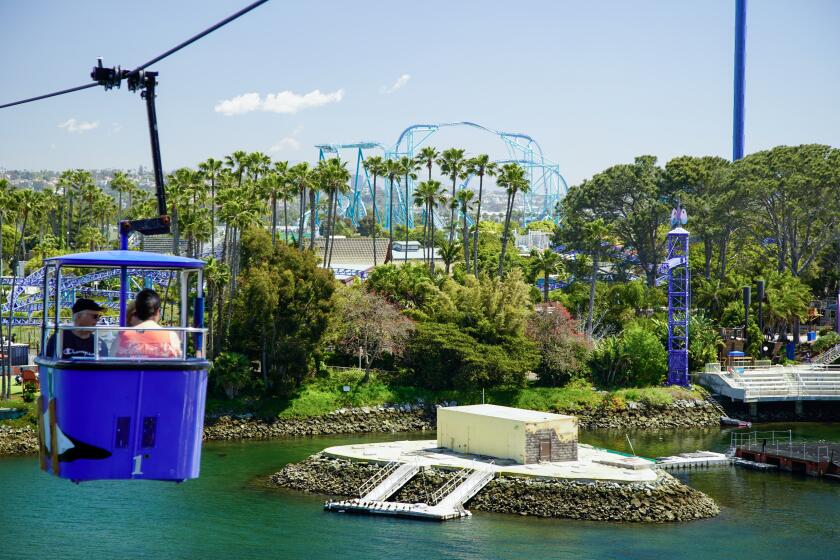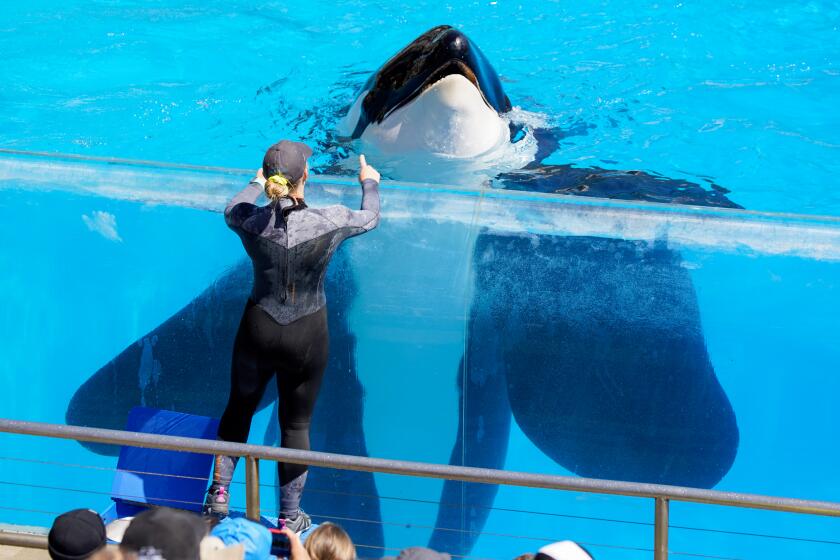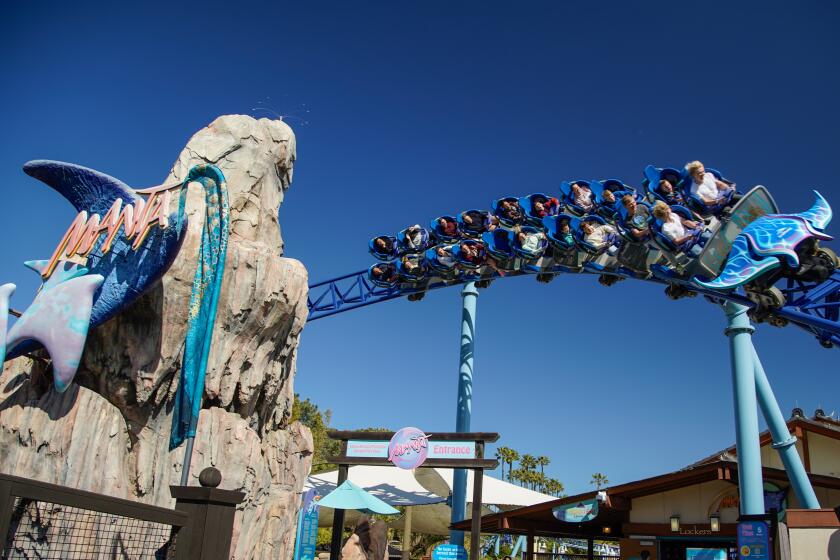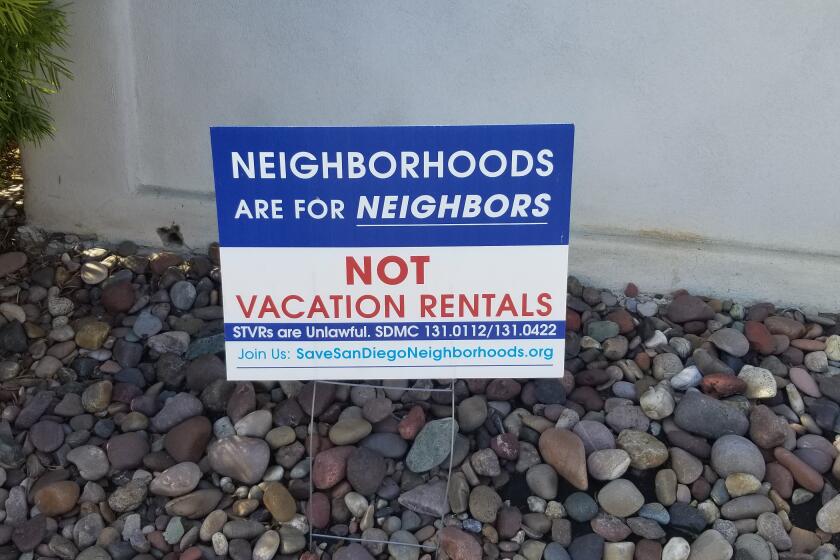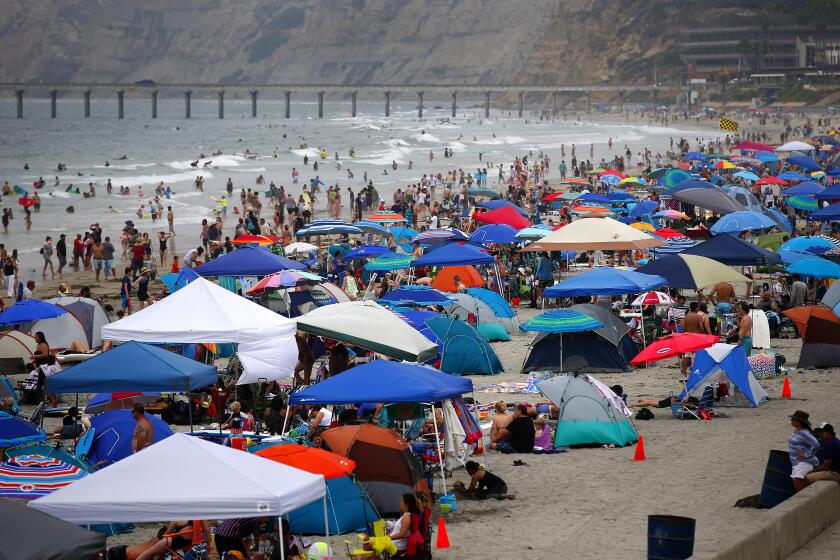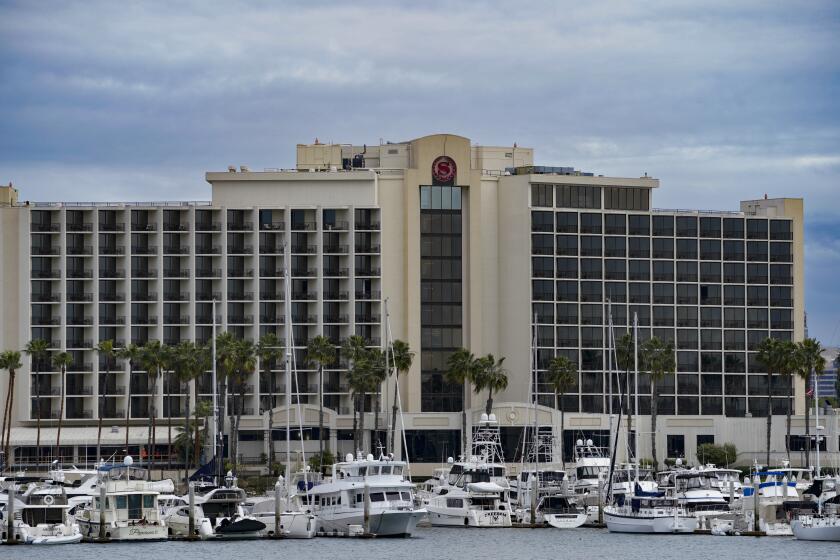Will this new ad fix SeaWorld’s attendance woes?

Two months after SeaWorld Entertainment CEO Joel Manby admitted it had been a mistake to curtail advertising aimed at bolstering the company’s sagging reputation, it has launched a new TV spot in San Diego that is expected to go national next year.
Images of a surfer, a cliff diver, a rescued sea lion appear in quick succession in SeaWorld’s latest TV ad, but blink once and you’d be hard pressed to catch a glimpse of the theme park itself.
Two months after SeaWorld Entertainment CEO Joel Manby admitted it had been a mistake to curtail advertising aimed at bolstering the company’s sagging reputation, it has launched a new TV spot in San Diego that is expected to go national next year.
“Park to Planet,” a feel-good commercial dominated by video of the ocean, marine mammals, rescue work and undersea exploration, exhorts viewers, “From park to planet, see it here, save it there.”
The 30-second spot, which started airing in San Diego about two weeks ago, follows a three-month digital-only campaign that SeaWorld marketing staff said resonated strongly with those who viewed it online.
They knew it was connecting because SeaWorld was able to track how many people clicked on the video, how long they stuck with it and whether it drove them to SeaWorld’s website to purchase a ticket.
At the conclusion of the ad, viewers learn that by visiting the parks, they can help SeaWorld contribute $10 million a year toward animal rescue and conservation efforts.
“There was a time when we put the branded message out with the SeaWorld animals and then we took some of that away and went back to the typical event and attraction message but you need both,” said Denise Godreau, who joined the company earlier this year as the chief marketing officer. “This particular ad, Park to Planet, worked remarkably well, beating every other message we’ve had, with higher consumer engagement.”
It also marks a return to the kind of advertising Manby believes will help resuscitate park attendance and revenues, which have suffered since the 2013 release of the anti-captivity film, “Blackfish,” that was critical of SeaWorld’s treatment of its killer whales.
Although SeaWorld has invested considerably in marketing efforts to combat the negative perceptions fueled by both the film and animal rights activists, the company learned the hard way that the public needed to be reminded yet again — even with last year’s announcement it was ending the captive breeding of orcas.
In August, SeaWorld reported that visitation across its 12 parks had declined 4 percent during the first half of the year. SeaWorld San Diego, in particular, it said, was hurt by “public perception issues” that resurfaced after it scaled back investments on its reputation campaign.
“They tried the refutational approach in the past where they tried to confront the (killer whale) issue head on and it seemed to backfire,” said San Diego State business marketing professor George Belch. “This is a very different approach that avoids the potential for seeing a commercial that starts bringing back the whole Blackfish issue.
“Instead, it has great imagery of the ocean and the animal rescue thing, which is a very positive message. Are people now going to come because they think I have to help SeaWorld rescue animals? No, but it could factor in and make you feel a little less guilty about visiting SeaWorld.”
Godreau would not divulge how much the company is spending on the latest advertising, noting that the marketing budget for next year is still not finalized.
When SeaWorld released its earnings in August, it reported that in addition to the $40 million in net cost savings it expects to realize by the end of 2018, it was identifying an additional $25 million in savings it could potentially reinvest in marketing.
Just last week, SeaWorld announced it was cutting 350 positions companywide, including 79 in San Diego. A year earlier, the company eliminated 320 jobs.
In its new online and television advertising, SeaWorld has to be careful to not overreach in its “save the planet” messaging, says theme park analyst Bob Boyd.
“I think people will take a skeptical eye if it’s too over the top, and it’s right on the border in my view of not feeling as genuine,” said Boyd, managing director at Pacific Asset Management. “SeaWorld has positive contributions but it’s probably not going to save the planet.”
Business
lori.weisberg@sduniontribune.com
(619) 293-2251
Twitter: @loriweisberg
Get U-T Business in your inbox on Mondays
Get ready for your week with the week’s top business stories from San Diego and California, in your inbox Monday mornings.
You may occasionally receive promotional content from the San Diego Union-Tribune.



